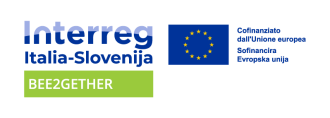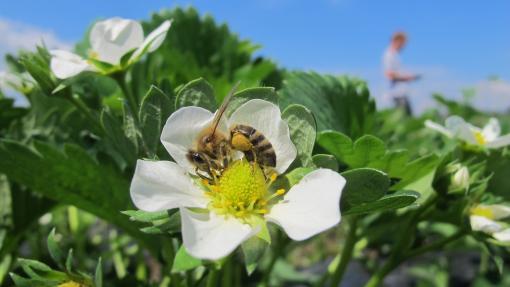The honeybee is one of the most recognisable pollinators. Its role in pollinating plants and producing honey, propolis, wax and other bee products is invaluable. Its properties make it extremely popular among beekeepers. The honeybee has as many as 30 subspecies, distributed all over the world. The Italian honeybee (Apis mellifera ligustica) is the most widespread bee and is native to Italy, the southern edge of the Alps and northern Sicily. The Carpathian honeybee (Apis mellifera carnica) is native to Slovenia, much of the Balkans and parts of Central Europe. The two subspecies can be roughly distinguished by appearance. The Carpenter bee has a body covered with grey-brown hairs and a dark brown coloured rump. The Italian bee is recognisable by its brownish-yellow colour. The first three legs are yellow and the remaining legs are dark brown. There may be interbreeding between the two subspecies.
Bee colony structure and life
Each bee colony consists of a queen, workers and brood, and can number up to 60,000 individuals in total. The natural reproductive strategy of bees is swarming, in which the old queen leaves the hive with part of the workers to start a new colony, while the new queen remains in the existing colony. Honeybees used to nest in tree hollows, but nowadays most live in hives cared for by beekeepers. Beekeeping is an important agricultural industry. Bees are kept by beekeepers for their bee products, but they are also important pollinators... Their main advantage is their high abundance, but they cannot replace the role of wild pollinators.
Beekeeping in Slovenia and Italy
In Slovenia, more than 11,000 beekeepers look after more than 200,000 bee colonies. In Italy, there are more than 80,000 beekeepers, who together look after around 900,000 bee colonies. We can help honeybees by maintaining colourful, flowering meadows, sowing honey plants and using pesticides wisely. But it is up to beekeepers to look after the health and nutrition of bees, which is increasingly difficult in a changing climate and requires a lot of knowledge and adaptation.
Prepared by the National Institute of Biology
Photo from Danilo Bevk

